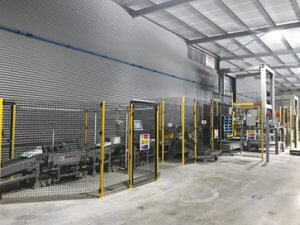This website uses cookies so that we can provide you with the best user experience possible. Cookie information is stored in your browser and performs functions such as recognising you when you return to our website and helping our team to understand which sections of the website you find most interesting and useful.
Phases of a Bagging and Palletizing project
14·06·2021
When a potential client contacts Boga Técnica to solve their bagging or palletizing problem, the project phases are divided as follows:

IDENTIFICATION OF THEIR NEED:
Each customer has a particular product or bag with which he works.
For this purpose and with a technical visit to its facilities, we analyze in detail:
the product and its behaviour
and according to their production needs:
type of bag, required closure, production and available space,
we offer the best bagging or palletizing solution.

TECHNICAL STUDY AND LAY OUT:
As a result of the visit and subsequent evaluations, we generate a technical study with its corresponding lay out to confront it with the client.
This study shows the bagging or palletizing installation that has been proposed as the best possible solution for the product, type of bag, closure and required production. These solutions are always personalized for each client.
PURCHASE ORDER:
After different meetings, visits and various studies and lay outs, we reached a final agreement with the client to:
be able to launch the purchase order,
set a date for the delivery of the installation and
start with the manufacture of the equipment.

FACTORY ACCEPTANCE TEST (F.A.T).
One of the most important phases of the process, in which the installation is assembled and tested at the plant of our suppliers, as it will later be assembled at the customer’s plant. For this purpose, the client sends us their product and bags to carry out these tests, and be able to confirm with their presence, the correct completion of the equipment and proceed with the shipment to its final plant.

INSTALLATION AND TRAINING:
Once the installation is unloaded at its destination, it is mechanically and electrically assembled, and then the start-up of the installation is carried out, as well as the training of the personnel in charge of the plant.
















